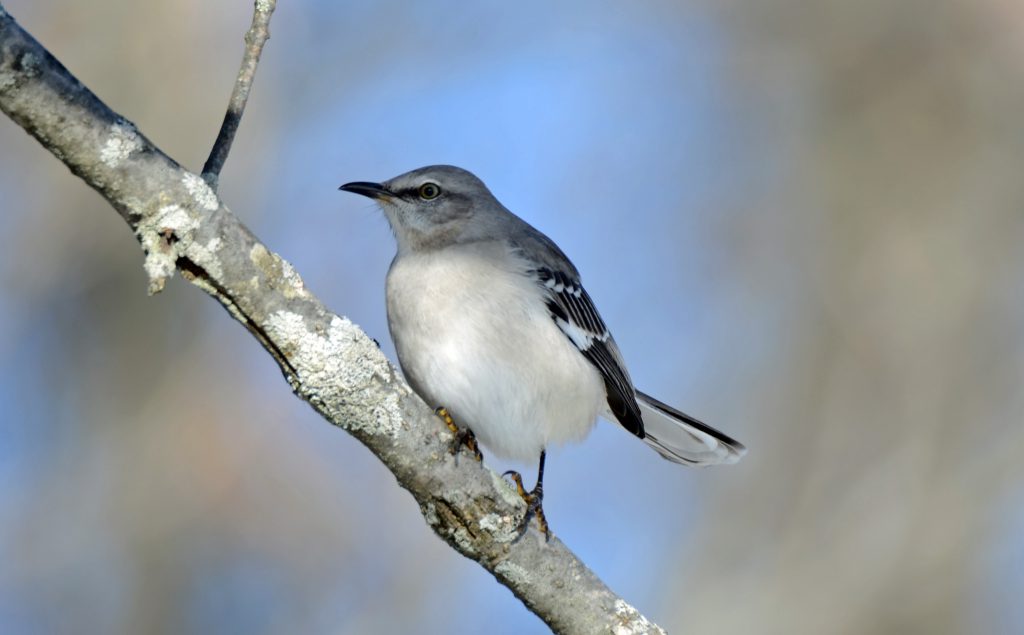
The Northern Mockingbird is a medium-sized bird that is commonly found in North America. It measures about 8 to 10 inches (20 to 25 cm) in length and weighs around 1.4 to 2 ounces (40 to 58 g). It has a long tail and a wingspan of about 12 to 13 inches (30 to 33 cm). The Northern Mockingbird is known for its distinctive markings, which include a grayish-brown back, a white belly, and a black and white wing pattern.

One of the most distinguishing features of the Northern Mockingbird is its ability to mimic the songs of other birds. It can mimic up to 200 different bird songs and other sounds, such as car alarms and cell phone ringtones. This mimicry is often used as a way to attract mates and defend territory. Additionally, the Northern Mockingbird has a habit of perching on high points, such as trees, to sing its songs.
The Northern Mockingbird is a year-round resident in the southern United States, but migrates to the northern parts of the country during the breeding season. It breeds from late March to early September and can produce up to three broods per year. The female Northern Mockingbird lays 2-6 eggs at a time, which are incubated for about 12-13 days. The young birds leave the nest about 10-12 days after hatching.
In addition to its distinctive songs, the Northern Mockingbird is also known for its aggressive behavior when defending its territory. It will attack other birds and even small mammals that come too close to its nest. This territorial behavior is most common during the breeding season, but can occur year-round in some areas.

Overall, the Northern Mockingbird is a fascinating and distinctive bird that is known for its ability to mimic other sounds and defend its territory. Its unique features and behavior make it a popular bird for birdwatchers and nature enthusiasts to observe and learn about.

